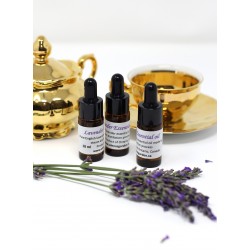
Understanding Herbal Remedies: Tinctures, Extracts, Oils & Salves
For centuries, people have turned to plants for healing, nourishment, and well-being. Today, Herbs and herbal remedies continue to thrive — from soothing teas to powerful extracts. Among the most popular and versatile herbal preparations are tinctures, liquid extracts, herbal oils, and salves.
While they may look similar on the shelf, each one serves a different purpose and is made in its own unique way.
Let’s explore the differences — and how you can use them effectively in your everyday life.
Tinctures — Nature in a Bottle
A tincture is a concentrated herbal extract made by soaking fresh or dried herbs in alcohol (sometimes mixed with water) for several weeks. The alcohol acts as a solvent, pulling out the plant’s active compounds — such as alkaloids, essential oils, and flavonoids — and preserving them naturally for years.
How to use tinctures:
Tinctures are taken in small doses, usually a few drops to a teaspoon diluted in water, tea, or juice. Because they’re highly concentrated, they deliver the beneficial properties of herbs quickly and effectively.
Common examples:
-
Echinacea tincture for immune support
-
St. John’s Wort tincture for mood balance
-
Valerian root tincture for sleep and relaxation
Why people love them:
-
Long shelf life (often several years)
-
Fast absorption into the body
-
Easy to measure and take on the go
Liquid Extracts — Fast and Potent
While tinctures are made with alcohol, liquid extracts can use different solvents — such as glycerin (for glycerites) or vinegar — to draw out the plant’s compounds. They’re similar to Tinctures but sometimes stronger and more standardized in concentration.
Liquid extracts are ideal for people who prefer alcohol-free remedies or want a ready-to-use concentrated herbal solution.
Examples:
-
Elderberry liquid extract for cold and flu season
-
Turmeric glycerite for inflammation support
Tip: Always shake well before use — the natural compounds may settle at the bottom.
Infused Herbal Oils — Gentle, Nourishing Infusions
Unlike tinctures or extracts, herbal oils are made by soaking herbs in a carrier oil (such as olive, jojoba, or sunflower oil). The process can take days or weeks, allowing the oil to absorb the herb’s scent, color, and healing properties.
Herbal oils are mainly used externally on the skin and hair.
Common uses:
-
Calendula oil — soothing for dry or irritated skin
-
Lavender oil — calming, aromatic, great for massage
-
Arnica oil — helps with sore muscles and bruises
Tip: Store in a cool, dark place to preserve freshness.
Salves — Healing in Solid Form
Salves are made by combining herbal-infused oils or Essential Oils with natural beeswax. The beeswax thickens the oil into a smooth, spreadable balm.
They’re ideal for topical use — soothing dry, cracked skin, cuts, scrapes, or sore muscles.
Examples:
-
Comfrey salve for minor wounds or sprains
-
Lavender salve for relaxation and stress relief
-
Plantain salve for bug bites and itching
Salves are a wonderful way to keep herbal remedies handy — in your purse, first aid kit, or bedside drawer.
Final Thoughts
Whether you’re new to herbalism or have been crafting remedies for years, understanding the differences between tinctures, extracts, oils, and salves helps you choose the right preparation for your needs.
Each form offers a unique way to connect with the healing power of plants — from fast-acting tinctures to skin-soothing salves.


Leave a Comment